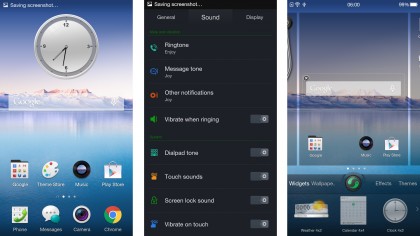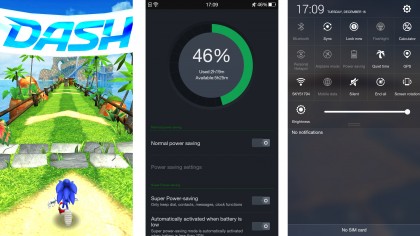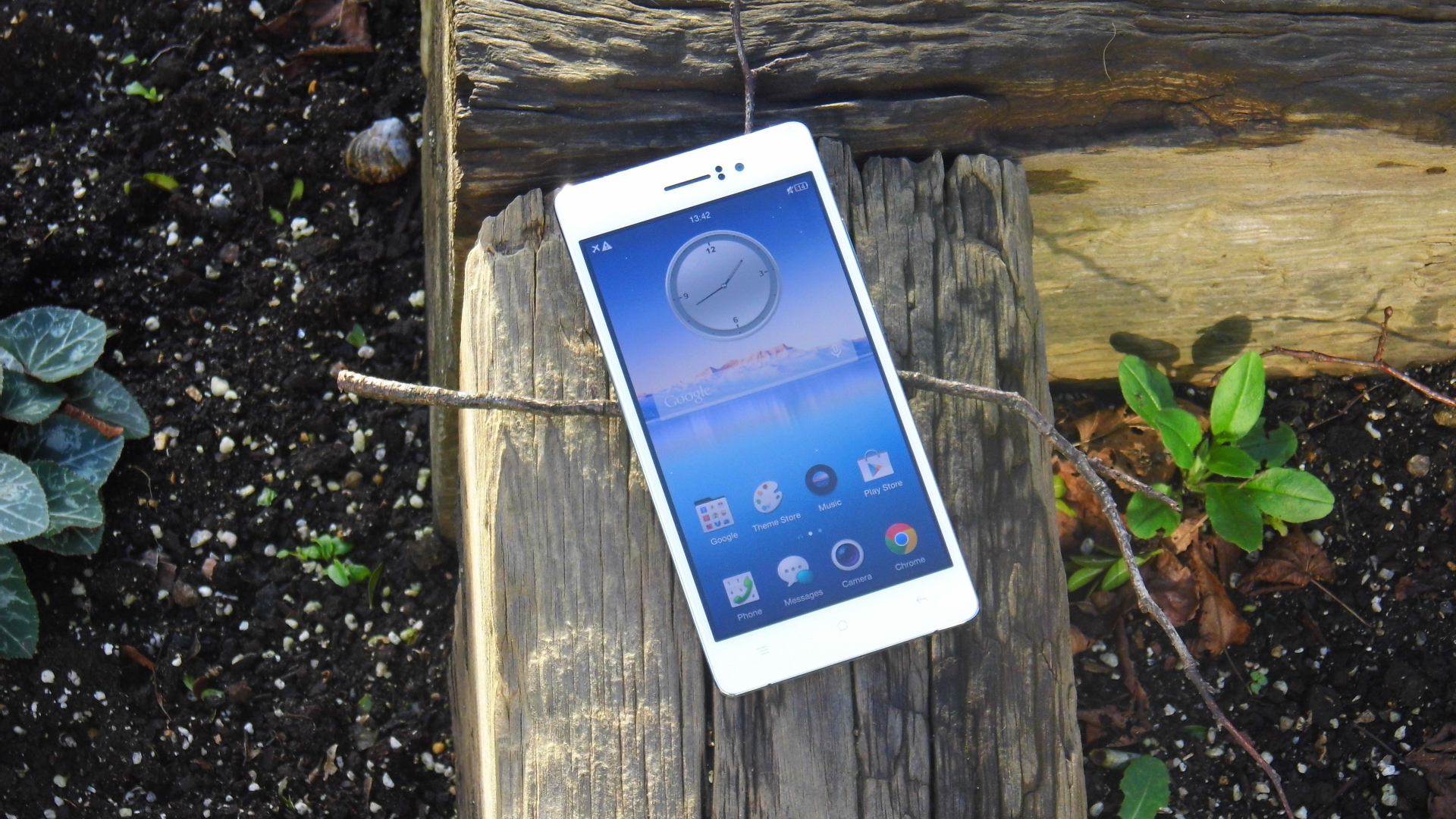Why you can trust TechRadar
The tiny frame of the Oppo R5 disguises just how much power is sat within the Chinese handset. An octa-core (four 1.5GHz and four 1GHz cores) Snapdragon 615 SoC and 2GB RAM have been provided to keep a custom version of Android 4.4 running, though there's no update to Android 5.0 in sight.
In terms of sheer power, the OnePlus One appears to have the R5 beaten with its four 2.5GHz cores and 3GB RAM, while more recent flagships like the Samsung Galaxy S6 also have the edge, but that doesn't mean that the R5 is lacking in any way.
The octa-core CPU should also help eke out a few more drops of battery power, and it would do the R5 a disservice not to mention that it has the Adreno 405 GPU rather than the OnePlus's 303.
I mentioned that Oppo has included a custom version of Android 4.4 KitKat, nicknamed ColorOS 2.0. Thankfully Oppo has kept changes, at least on surface level, to a minimum, meaning it retains a heavy Android feel.
In fact the R5's home screen reminded me very heavily of the T-Mobile G1 which was a little disconcerting.
ColorOS has some really interesting, innovative and useful features built into it. For starters, the notifications bar has been tooled to offer up quick toggles, automatically expanding when there are no notifications to display and hiding when you receive a text or email.
A data counter is also built in, something that will appeal greatly to those that constantly push their data limits.

Within the settings menu you can also enable a network speedometer. I can't see this being useful for the average consumer, but heavy users might find this of use. The notifications bar is permanently black at the top of the screen, making it easier to see the little icons and text, but gives ColorOS a cheaper feeling compared to other Android UIs.
The whole UI feels clean and well designed, although Oppo hasn't included a wide range of widgets (there is only one clock, round and analogue). This could be down to the minimalistic and almost iOS feel that Oppo is trying to achieve, but experienced users will find that they might have to use the Play store to download alternatives.
The app drawer is also missing. This won't be so much of a problem for those moving over from an Apple handset or those new to the Android experience, but for those that have used Android for a while it takes a lot of getting use to and I am still not sold on the idea.
I also found it equally frustrating when it came to text size. Despite going through the settings menu to set font size to the smallest setting, this didn't appear to carry through the handset resulting in a lower resolution feel. Having moved from daily use of the Galaxy S4 Mini, this seemed a little odd.
Another oddity, and this is something that I would like to see changed on all larger screened handsets, was that only four icons are arranged horizontally on home screens. Given the larger size, it is nonsensical that manufacturers haven't found a way of putting five there.
In day to day performance the Oppo R5 performed very well. There was no hint of slow down while moving between home screens, and gaming while downloading didn't offer any real problems. This is thanks to the structure of the eight cores sat inside the R5; four larger cores taking the heavy strain whilst four smaller cores keep lower power and background processes running.
Our Geekbench benchmarking scores show that the Oppo R5 actually outperforms the OnePlus One, with an average score of 2644. This puts it around the same level as 2014 flagships like the Galaxy Note 3, Sony Xperia Z2 and HTC One M8.
Battery life
Supplied within the Oppo R5 is a non removable 2000mAh battery. This is by no means the largest battery pack available, especially given the size of the screen. Given the super slim nature of the R5 though, this was to be expected.
The HTC One M9 with its 5-inch screen has a 2840mAh battery and the OnePlus One has a 3100mAh power pack. Bigger screens on the whole have meant bigger batteries, Oppo has definitely bucked this trend.

In day to day use I found that the Oppo R5 was okay, although nothing spectacular. There was enough to be able to get me through the day but with little to nothing spare, 15% at bed time is just about enough but any delays while travelling would have been catastrophic.
This is aided somewhat by the inclusion of some power saving modes, a normal and a super mode. The former allows the screen brightness to be reduced, removes haptic feedback, unnecessary data connections, animations, and underclocks the CPU.
The super power saving mode is a little more interesting, restricting phone functions to dialling, contacts, texting and the clock.
Oppo also includes a VOOC charger for rapid charging, claiming that 75% is achievable within 30 minutes and a enough charge for 2 hours can be attained in 5 minutes. I'm a little sceptical over these figures as I was only able to get 58%, but I had left data connections on at the time.
Using the TechRadar benchmark test, a 90 minute HD video at full brightness, gained a drop of 27%, 10% more than that of the OnePlus One. Playing ten minutes of Sonic Dash gave a drain of 8%.
In short I was comfortable going through a standard day with the Oppo R5, but I would always carry that VOOC charger around with me just in case.
Current page: Interface, performance and battery life
Prev Page Key Features Next Page The essentials